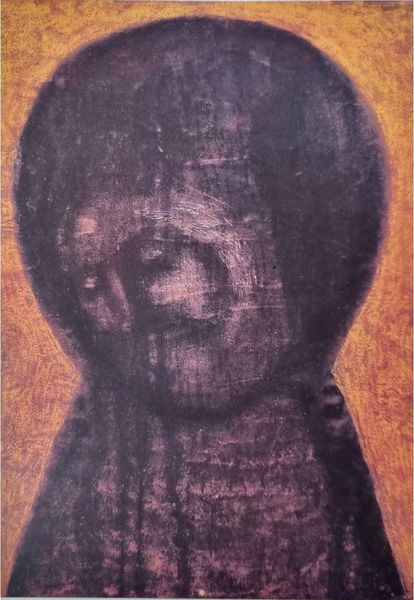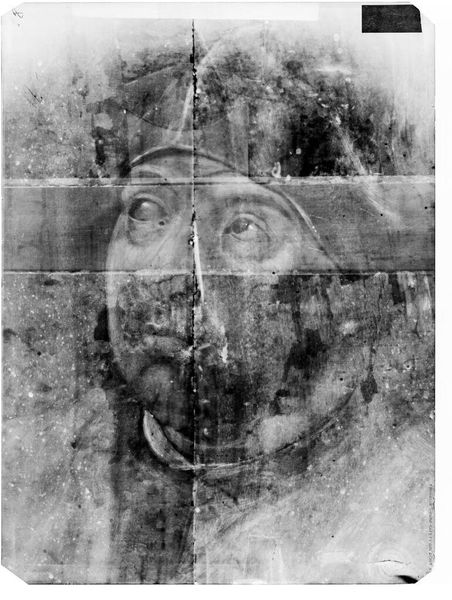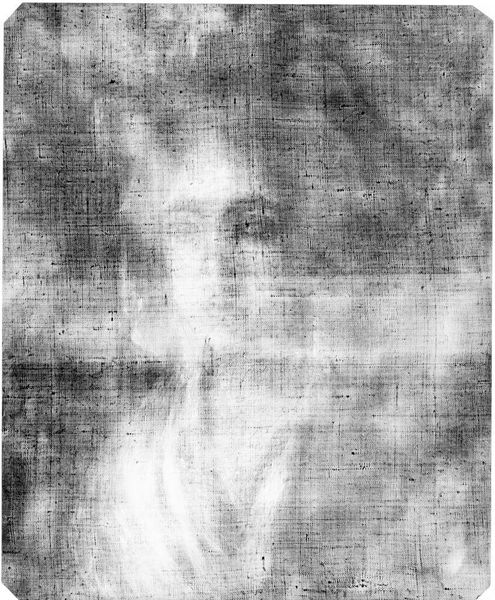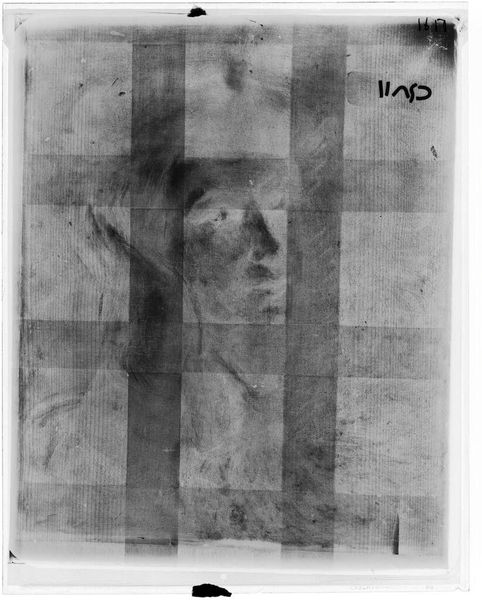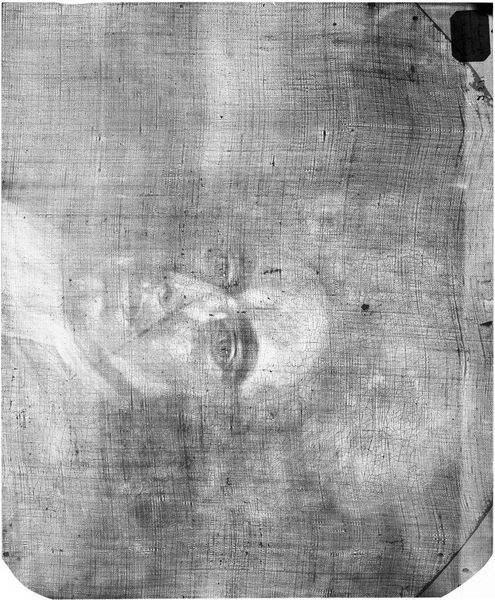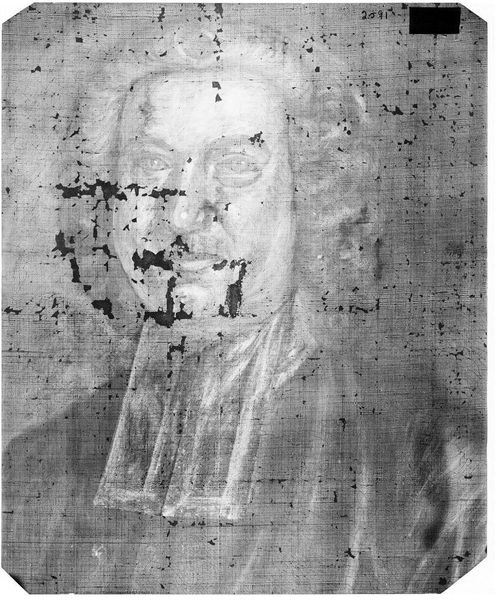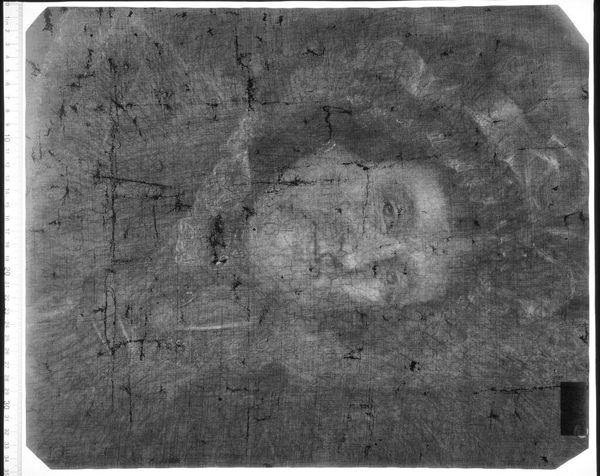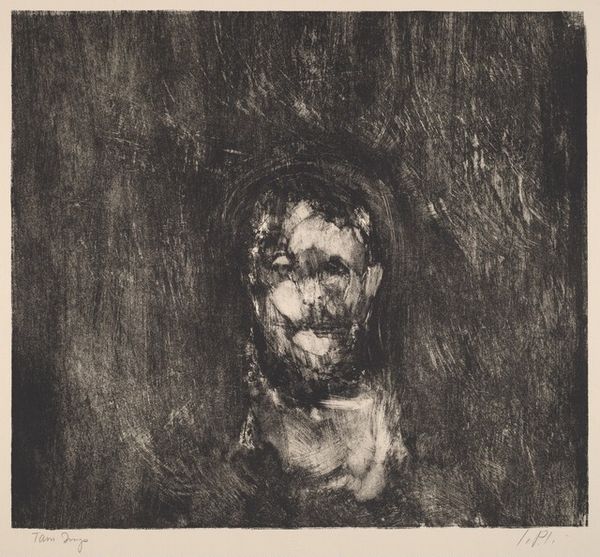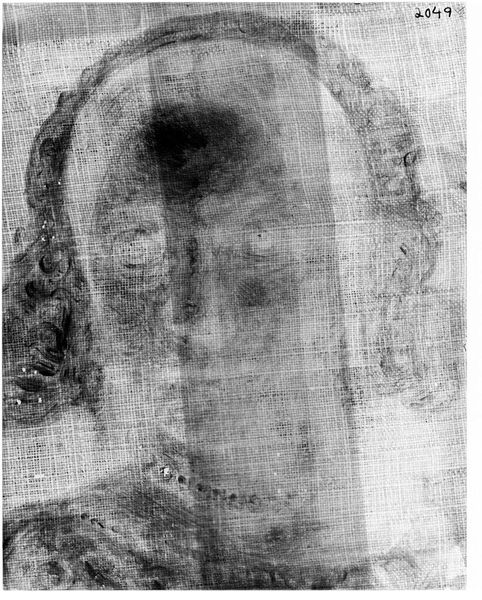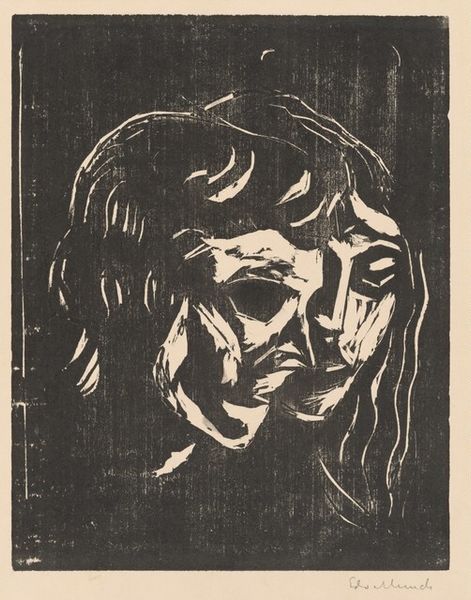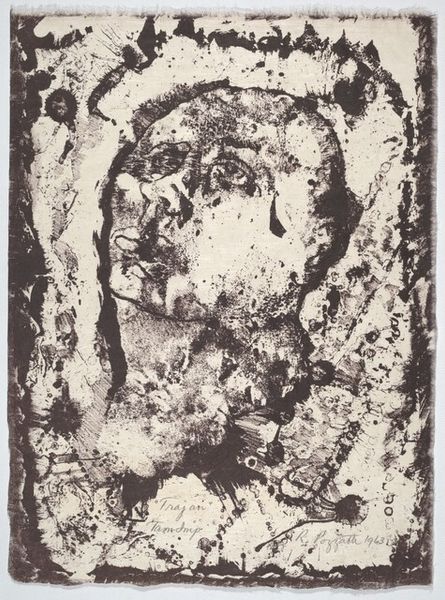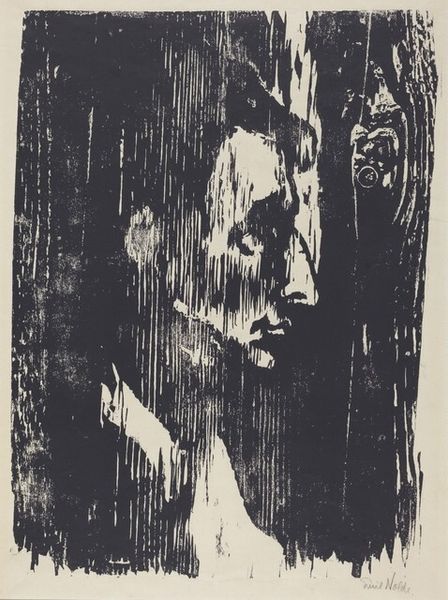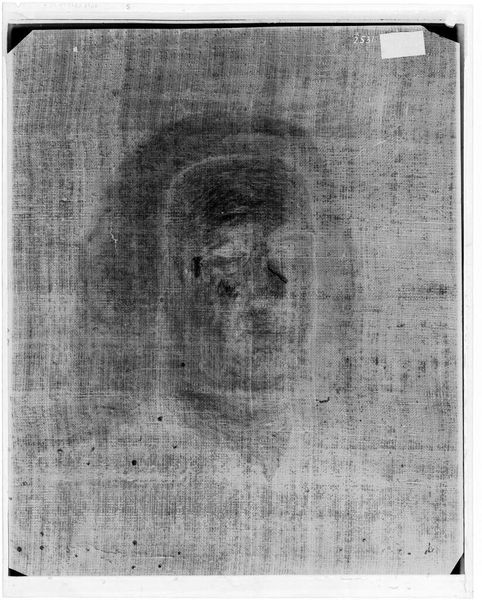
Dimensions: image/sheet: 30 × 23.7 cm (11 13/16 × 9 5/16 in.) mount: 30.3 × 24 cm (11 15/16 × 9 7/16 in.)
Copyright: National Gallery of Art: CC0 1.0
Editor: Here we have Giuseppe Enrie's "Detail of the Shroud of Turin," a gelatin-silver print from 1931. The stark contrast and almost ghostly image are striking. What formal elements stand out to you in this piece? Curator: The severe chiaroscuro immediately commands attention. Consider how the photographer exploits the tonal range of the gelatin-silver print. The subtle gradations, or rather, the lack thereof, emphasize the object's texture, the weave of the cloth itself. Note how the image teeters on the edge of abstraction. Are we truly seeing a face, or a masterful play of light and shadow? Editor: It's incredible how much texture is visible, given that it's a photograph of a piece of cloth. Is the symbolism secondary to Enrie's approach? Curator: Symbolism may indeed be a later imposition. Consider instead how the photograph functions as an object in itself. The lines dissecting the image plane; do they detract, or do they underscore the work's material reality, reminding us that this is an object, a construct? How do they shape our reading of the purported image? Editor: That's a fascinating point. They act almost like guidelines or a framework. Curator: Precisely. And what does that framework enable? Does it create a container for the sacred, or a deconstruction of it? The severe cropping pushes it towards abstraction, doesn't it? Editor: It does, it makes me question what is presented. I never thought about the impact of the damage as part of the reading of the piece itself! Curator: Yes, and by understanding that Enrie wanted us to ask these questions through its material and shape, then the piece’s intention becomes so much richer.
Comments
No comments
Be the first to comment and join the conversation on the ultimate creative platform.
